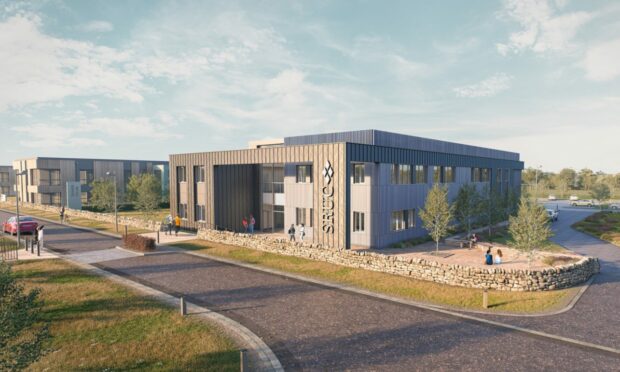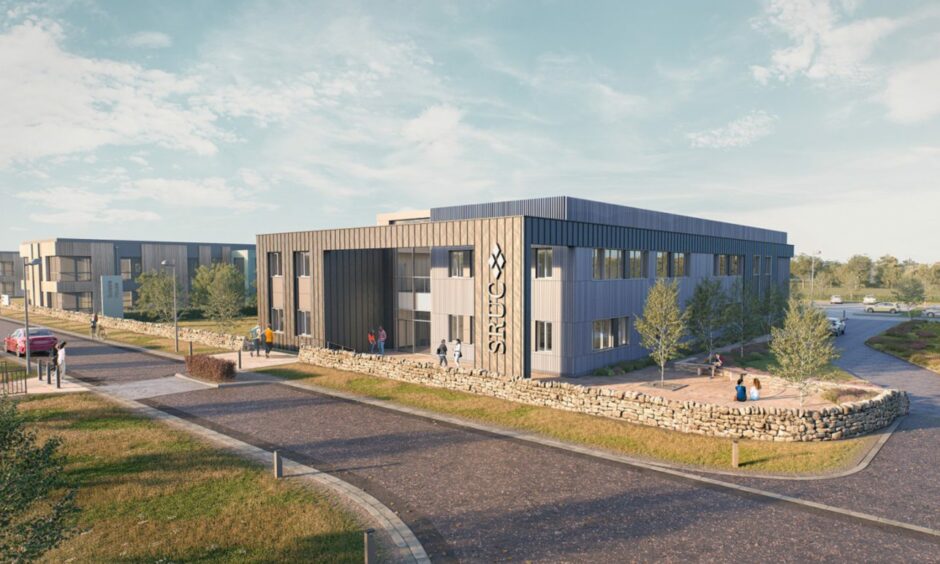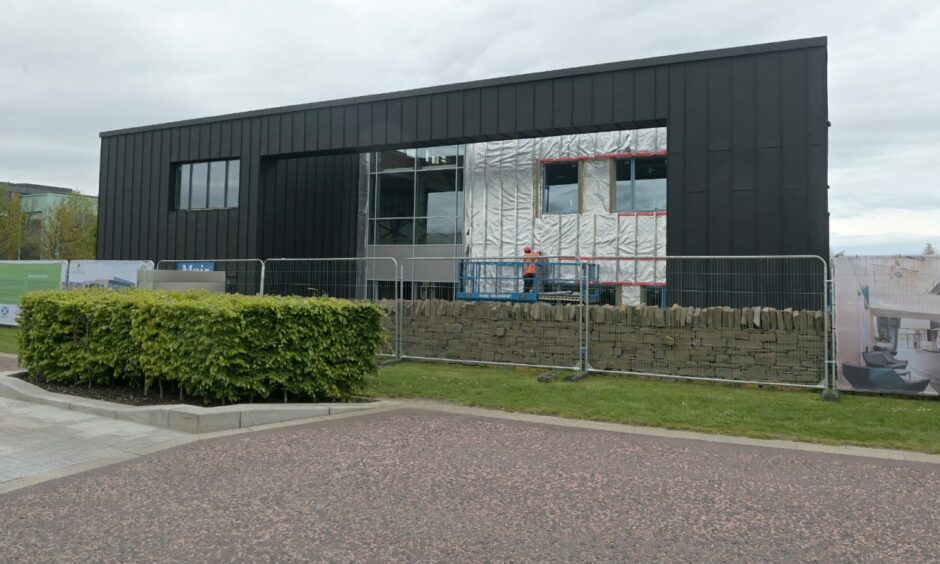Dozens of new jobs will be created at a multi-million pounds centre being built in Inverness to help tackle and prevent diseases affecting the agriculture and aquaculture industries.
The £12.5 million Rural and Veterinary Innovation Centre (RAVIC) will bring new approaches to animal welfare, aiming to create spin-off businesses to support the rural economy.
RAVIC will unite scientists, innovators and businesses to create new products and services to overcome challenges, including those posed by animal disease, climate change and food security.
Centre will also help human health issues
There will also be an emphasis on bioscience, including animal health, with RAVIC forming part of Scotland’s new School of Veterinary Medicine.
In addition, skills will be used more widely to help human health, with work being done on zoonotic diseases – those transmitted from animals to humans.
The centre is due to open on Inverness Campus in the autumn with 60 staff.
It will house several incubation units, a lecture theatre and microbiology facilities to help attract businesses and entrepreneurs.
Around 30 jobs are expected to be created at the incubation units and within a few years the centre could have around 120 workers.
The project is led by Scotland’s Rural College, (SRUC) whose existing centre for epidemiology and planetary health will provide a core function.
It has been funded by the European Regional Development Fund, the Scottish Funding Council and SRUC.
RAVIC director Prof George Gunn said RAVIC is trying to “join the dots” between innovative business and research.
“The Highland innovation centre will help short-circuit the gap that exists between science and business to unlock the true potential of Scotland’s blue and green economies to create high value jobs.
“The development reinforces SRUC’s commitment to expanding its regional presence in the area and it will also be an important addition to the existing range of expertise already on Inverness Campus.”
Scientific collaborations
He said the team has done a lot of work in areas such as EColi, Lyme disease and Covid which has wider human disease implications.
There will be collaboration with scientists at the £9.5 million Life Sciences Innovation Centre, opened last month by the Princess Royal at the Inverness Campus.
Its work includes world-leading research on antimicrobial materials that could reduce infections.
“Zoonotic disease is where we see an overlap. We see a synergy and will be working with them, particularly on antimicrobial resistance”, said Prof Gunn.
RAVIC will also work closely with SRUC’s veterinary surveillance intelligence unit, a recently-developed Scottish livestock information system.
This will provide new ways to help farmers deal with animal diseases, increase production efficiency and reduce carbon emissions.
It will provide much-needed research data to support new tools to help farmers as climate change accelerates, bringing rapidly-changing animal diseases and uncertain markets.
Professor John Berezowski, from the veterinary surveillance intelligence unit, said it will bring together a wide range of data on animal health.
This can help prevent or predict the severity of some endemic diseases in livestock and reduce the number of animal deaths.
Information will also be used to inform Scottish Government policies on animal welfare.
Bringing big data to the farm
Prof Berezowski said the data can support businesses developing new technology to help farmers.
“We’re hoping it will spark interest from the business community. We want to see RAVIC attracting businesses to see if they can create tools to provide farmers with support to improve livestock health.
“Climate change will bring rapid change and farmers will have to be nimble to respond to the changing threats.
“If we can provide them with more information about these threats as early as we can then they have more time to prepare.
“It’s like a missing link for the livestock industry. We’re going to bring big data to the farm.”
Dr Adam Giangreco has been appointed as head of business development at RAVIC in a post supported through a partnership with Highlands and Islands Enterprise which has helped develop the centre.
Elaine Jamieson, head of food and drink and life sciences at HIE, said RAVIC will help grow the culture of collaboration that exists across Inverness Campus.
“RAVIC will enable businesses to work alongside scientists and researchers to develop products and services that are aligned to industry challenges and needs, transforming food systems to ensure they become more sustainable, secure and efficient.
“The growth of entrepreneurial businesses and research capacity will contribute to the further development of two key sectors in the Highlands and Islands: life sciences and food and drink.”
Are you interested in all the latest news and updates from Inverness? If so, why not join our new Facebook group.




Conversation